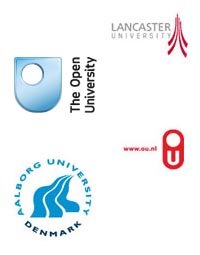

Selection and adoption of communication technology in a distributed network
Mika Sihvonen, Joanna Kalalahti, University of Tampere, Tampere, Finland
In recent years there has been a lot of effort to foster better communication between the development projects. Without communication in the project network, results of the project will remain in the level of unconnected statements and findings. To enable the communication and accordingly, information sharing and building of a common view, there must be a certain degree of familiarity, sense of belonging together and a common ground between the project actors. Since the project actors are geographically distributed, a technology mediated channel is needed for communication. It also promotes becoming acquainted with each other and building trust which is prerequisites for fluent communication.
We introduce the results of two separate sub-studies, which are part of larger project research. Sub-studies concentrate on the following research questions: What kind of technology should be chosen to support the communication in a physically distributed project network? How social media is based communication technology adopted by the project actors? We will also present our findings concerning other than technology related issues in technology selection. We suggest that social media tools have characteristics that may be valuable in distributed communication, but they also bring new challenges concerning technology adoption and acceptance processes, when less advanced users are concerned.
Previous studies have helped in setting up a framework for technology selection for distributed teams, but new social media tools and their potential for intended communication haven't been studied much. We suggest that features of social media tools bring new possibilities and also challenges for the adoption of technologies, especially for less advanced users who don't belong to networks of more advanced users. More advanced users seem to try new technologies quite fluently, but they may give up using them quickly, if the tools don't fit for their requirements and purposes.
We found several references about the features which should be present in a tool which will support communication. Also other features which are important prerequisites for communication in such a network were found. Familiarity of the project actors and willingness to work together, informal communication and contextual and situational issues and personal preferences for different kind of tools were found to have be important or have an effect on the communication.
Keywords
communication technology, distributed networks, technology selection, virtual presence, sense of a virtual community, social media
| About NLC | Welcome Messages | 2012 Conference Proceedings | Conference Organisation |Invited Speakers |Proceedings Handbook | Past Conference Proceedings | Exploring the Theory, Pedagogy and Practice of Networked Learning |Contact |